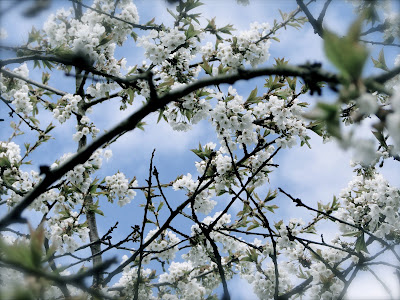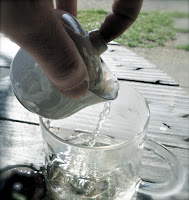It ‘s pleasant. Since some people know that I’m fascinating by drinking tea, sometimes they give me a specimen of a tea that they have at home and don’t know what to do with it.
Yesterday I was surprised by a friend who came with a vacuum packed tea that her husband got straight from China. All text on the packaging was in Chinese. So it doesn’t help us further. Today I thought, don’t think too much, just open and try it.
Surprisingly, it was an Oolong. The smell and the careful rolled tealeaves were hopeful. So I took a gaiwan and brewed the tea. After preheating the gaiwan and fill it with the leaves, the flavour awoke under the lid.
What a taste! I started gently, so I took water of 85°C. But hindsight, it may even a little warmer. The taste of this oolong is very fresh, fruity and downy. I was pouring the tea up to five times and when I had more time, it would have been more.
While my garden is playing with sun and ice, I cherish the warmth of a good cup of tea
Photo’s, gaiwan, plate and teacup (stoneware with slib
decoration): Iris Weichler










































